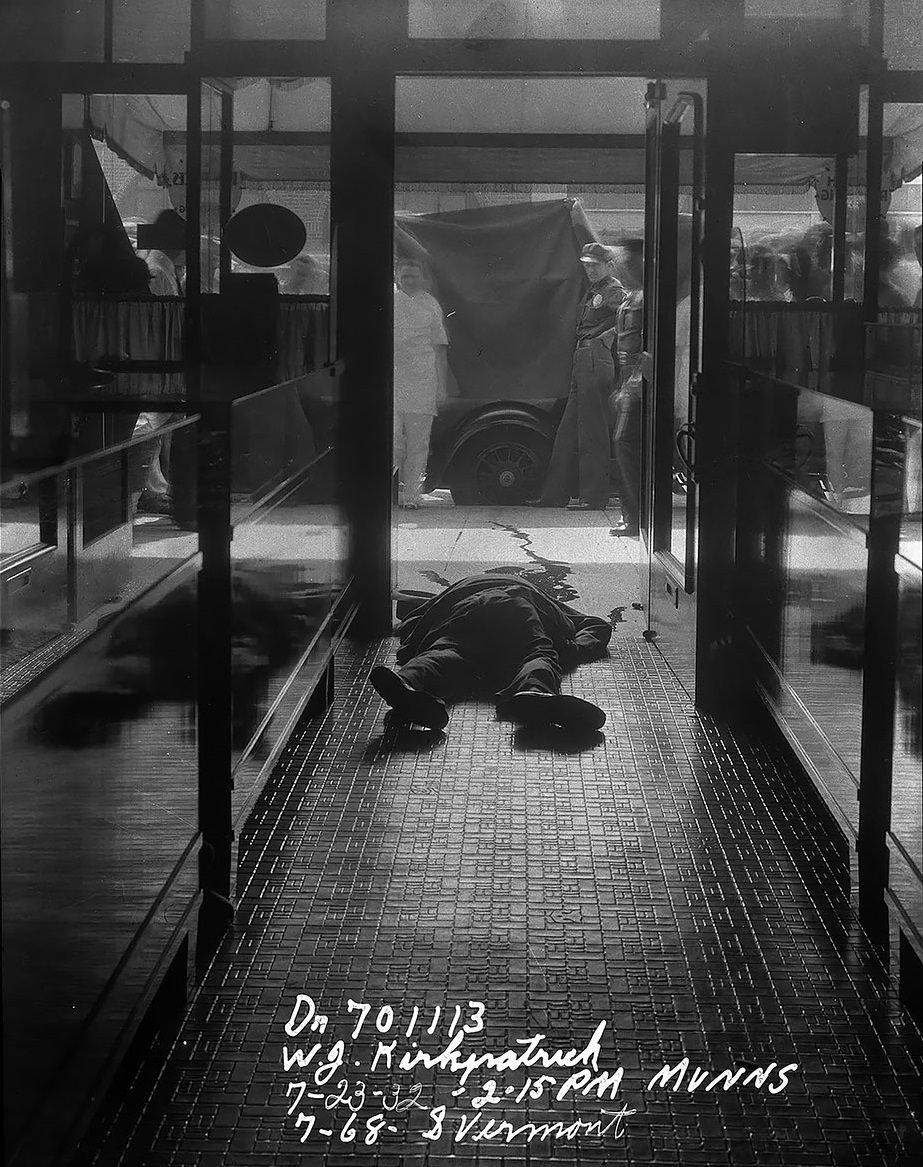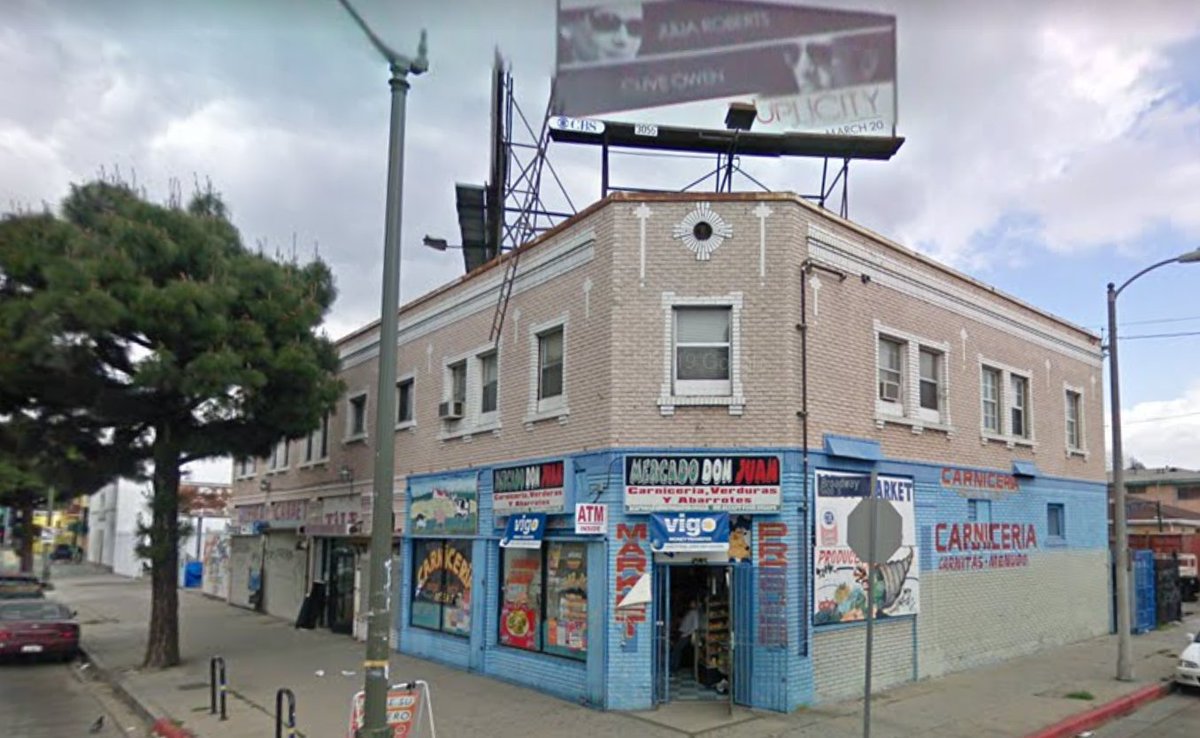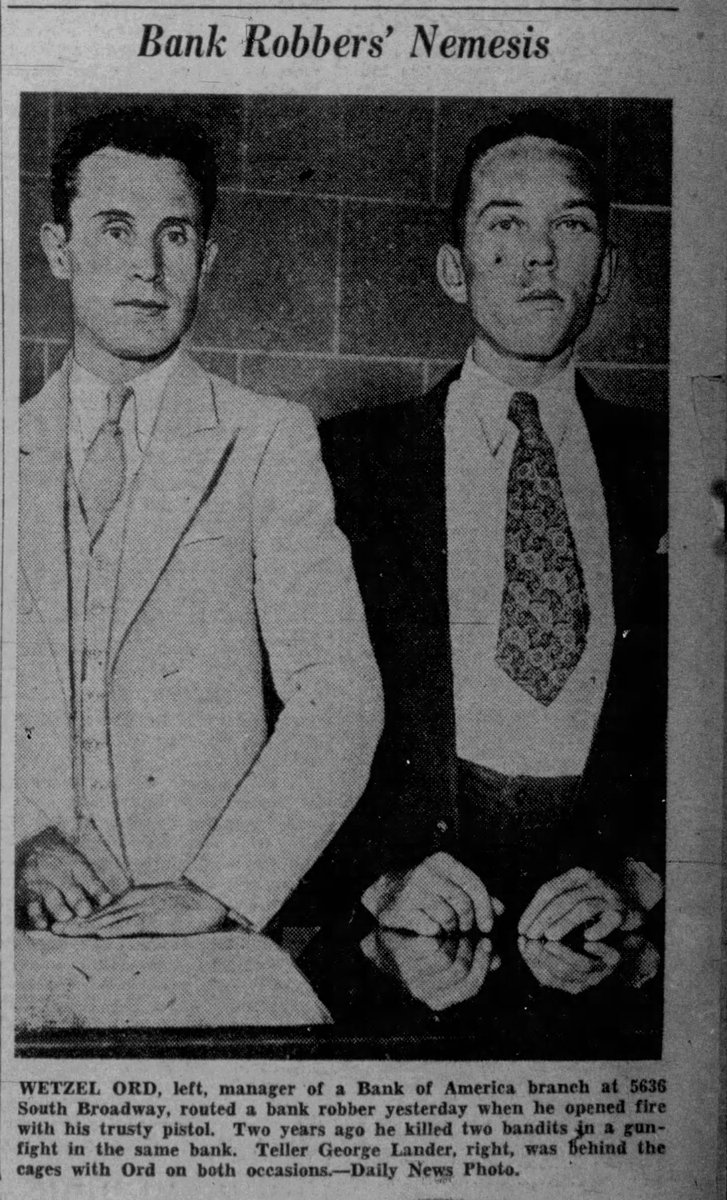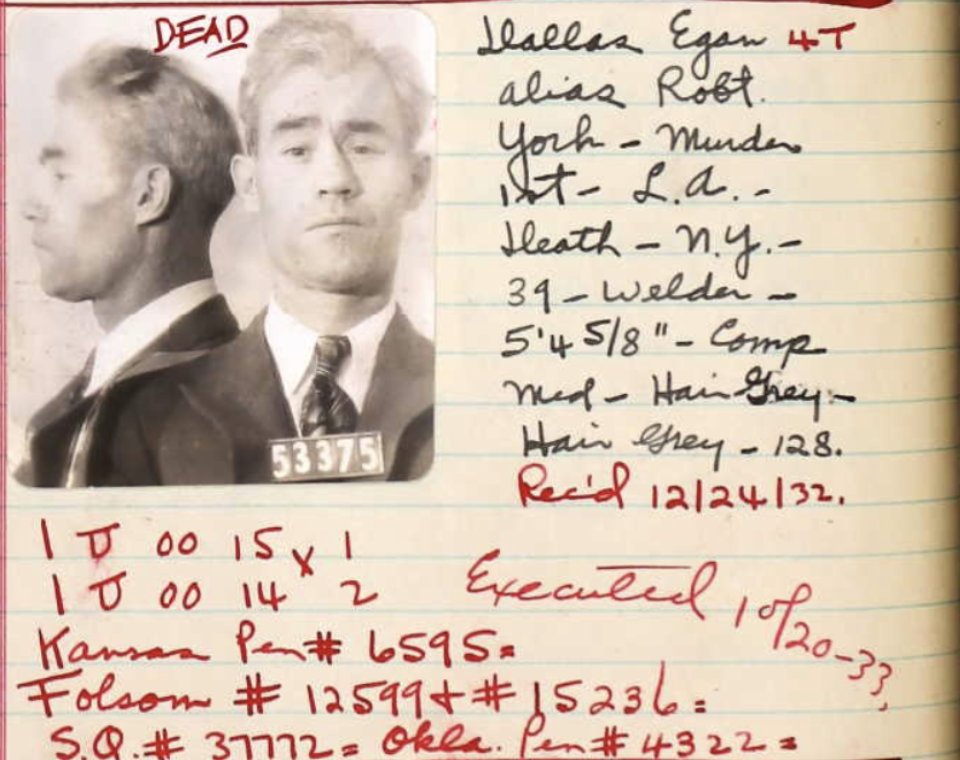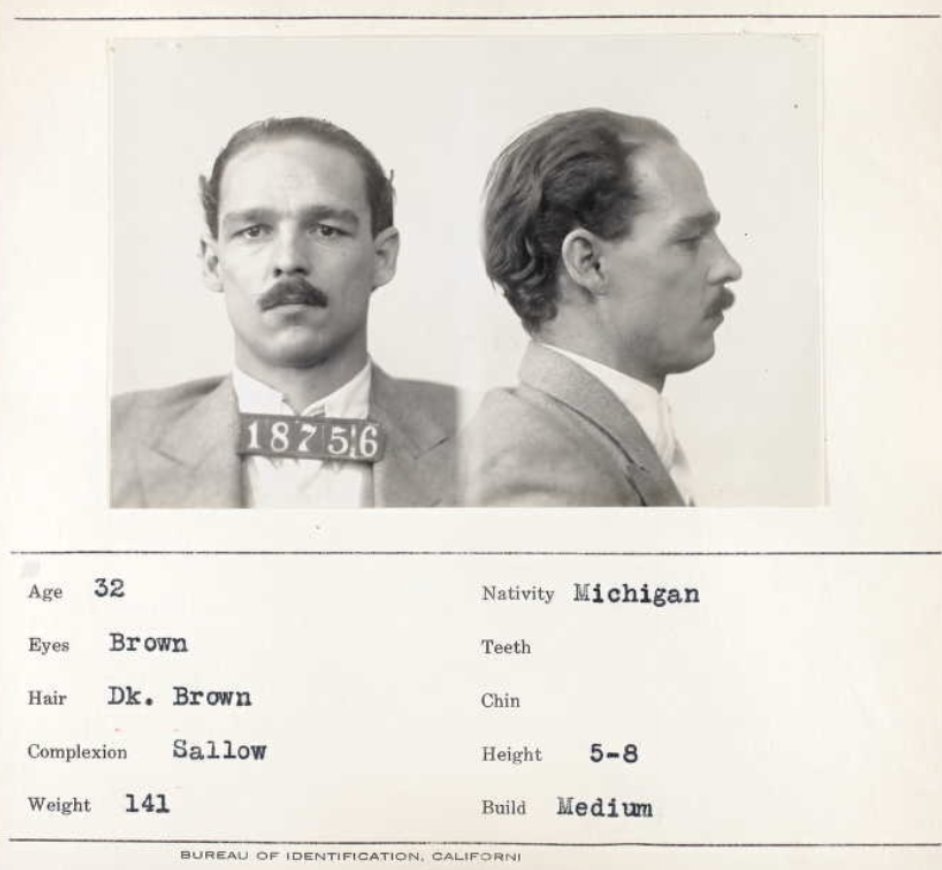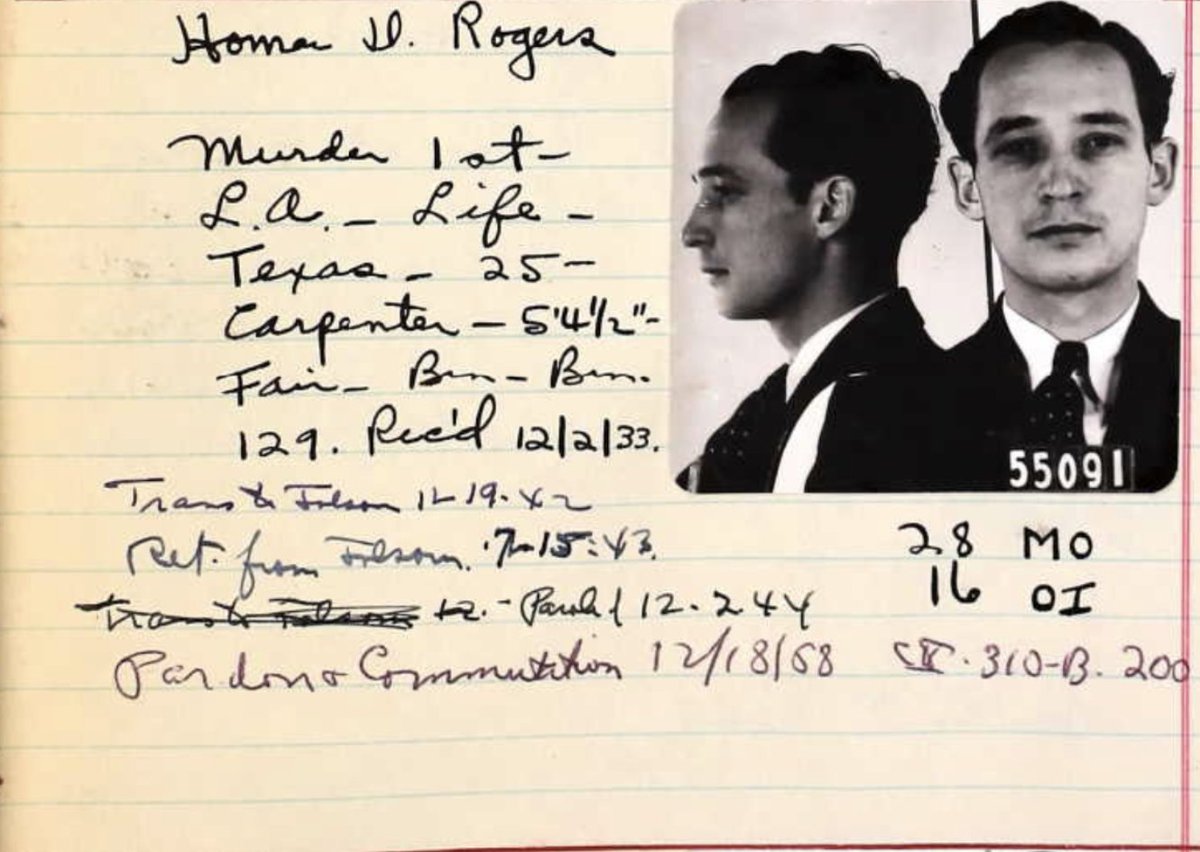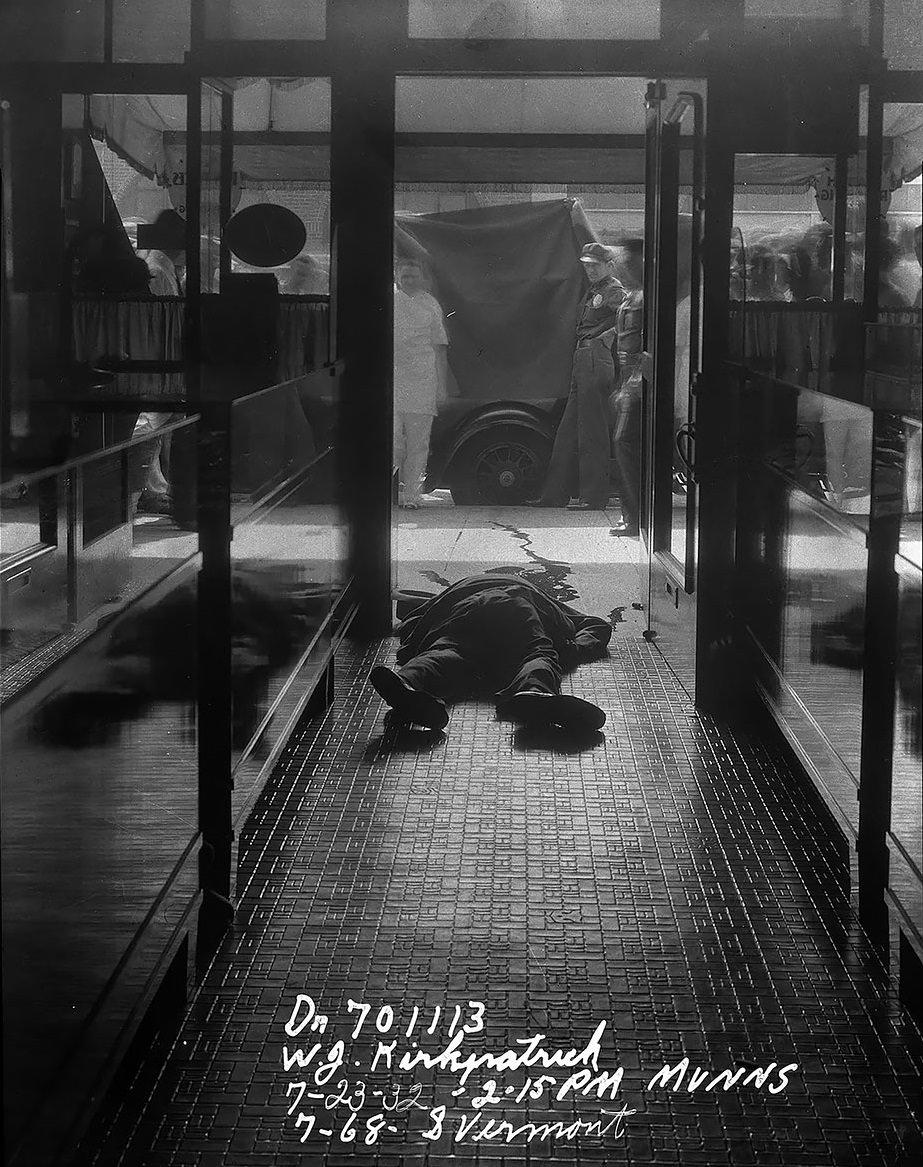This 1932 LAPD crime scene photograph is circulating online again, as it does periodically, with people sharing it commenting on the beautiful composition and noir details. We hate it.
Specifically, we hate that this image and others from the same period were plucked out of the LAPD files and published and sold as "art," without context of the situations and suffering they represent. Exploitation is not art, nor is it history.
Coal dealer William J. Kirkpatrick was a tourist from Michigan, who was in Los Angeles to watch the Olympics. His wife Jean and son Leland were in the car in front of the jewelry store when he went in to get his watch adjusted.
The store was being robbed, and Kirkpatrick startled the robbers, and refused their instructions to go into the back of the store with the other hostages. Kirkpatrick had often boasted to friends that if anyone ever tried to rob him, he would not submit.
But he was also deaf, and may not have heard or understood what was being demanded of him. He turned to walk out the door. The gang shot him dead and fled the scene with $4000 in jewels.
In August, the gang attempted to rob the Bank of America at 56th and Broadway, and got into a gun fight with pistol-packing bank manager Wetzel Ord. Robbers Frankie Alvarado and Henry Johnson were killed by Ord, and teller Harry Read gravely injured in the crossfire.
The surviving gang members were arrested. Dallas Egan, confessed shooter and gang leader, interrupted his trial to insist that he had been in sound mind when he committed the crime, but “none of us is entirely sane. You yourself, your honor, probably are not entirely sane."
Egan said that George Turcott and Homer Rogers, the other men charged with Kirkpatrick’s murder, had not been present. Everyone who had been had died by violence, including one he’d killed for shortchanging him on the take in a drugstore robbery. He alone should die.
“I want the rope. I gathered this gang together. Most of my pals were ex-convicts who weren’t chicken hearted. They shot to kill.” He asked to be sent to San Quentin; he didn& #39;t want Folsom guards "to have the satisfaction of standing around and leering at me in the death house."
He was hung in October 1933. Turcott and Rogers were imprisoned for their roles in the conspiracy. In 1955, Harry Read, who had been shot in the back during the aborted 1932 bank robbery, died by suicide, despondent over lingering health problems caused by the injury.

 Read on Twitter
Read on Twitter